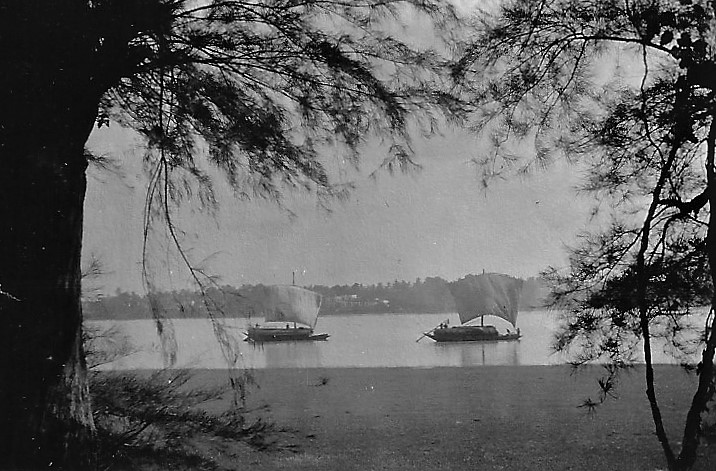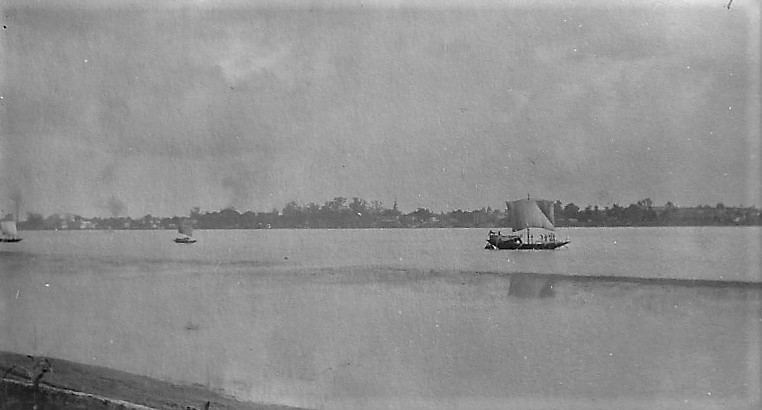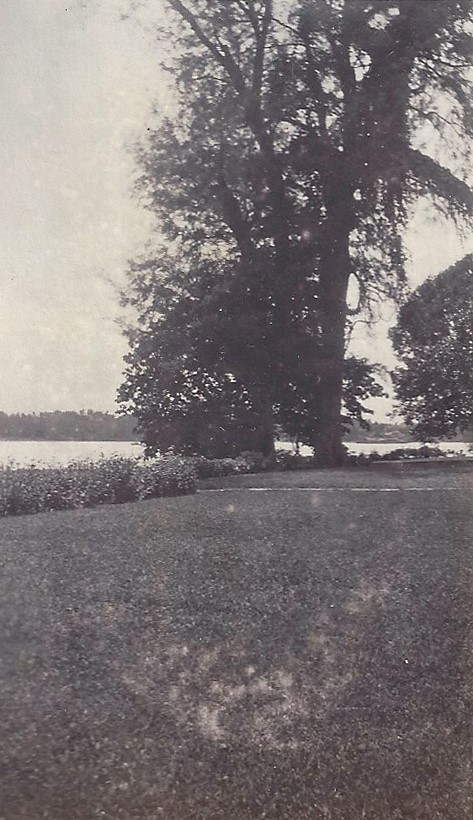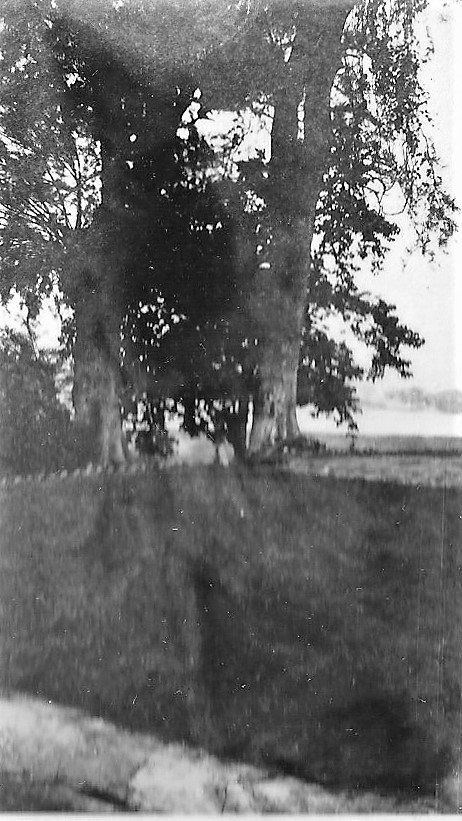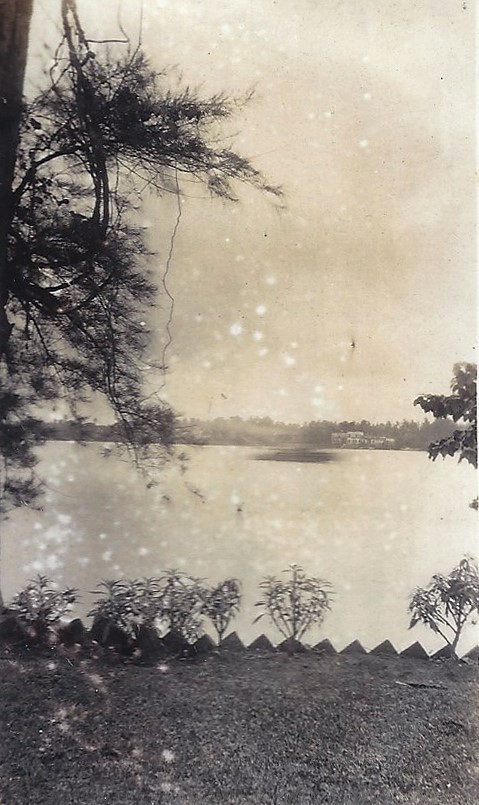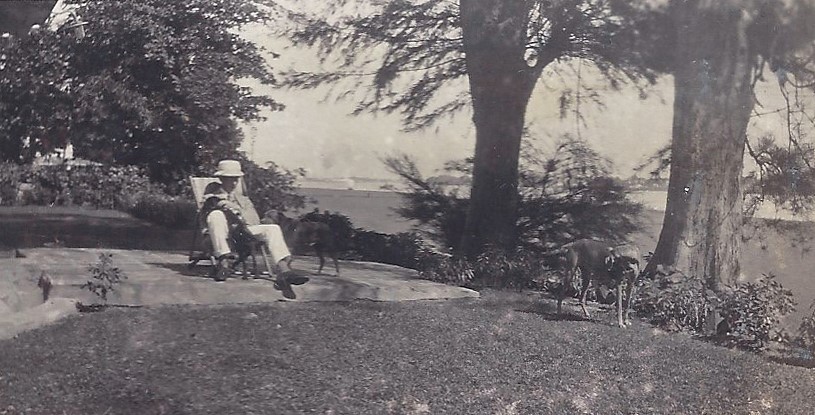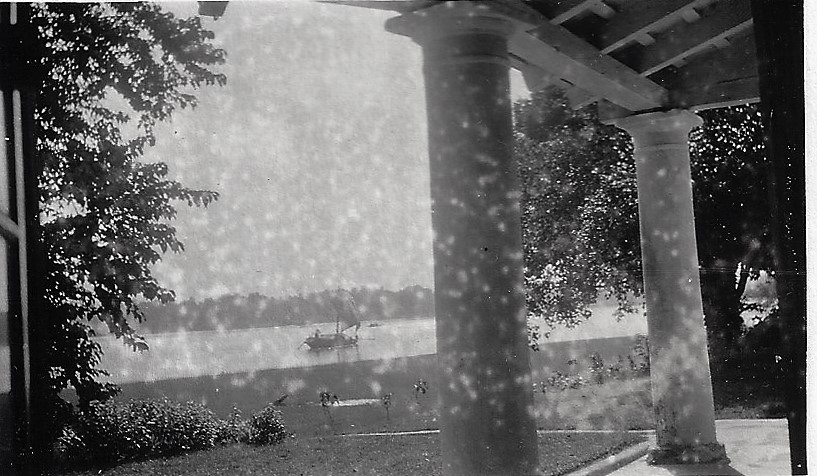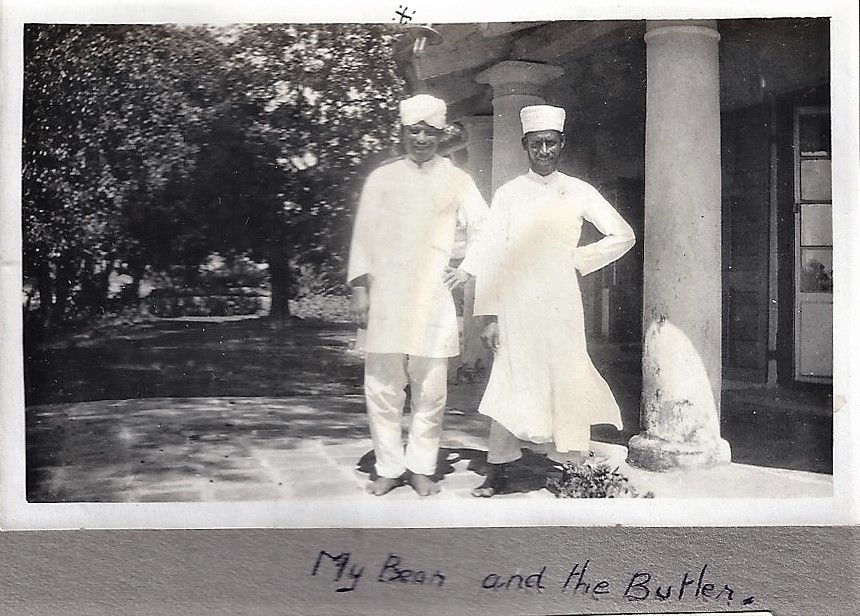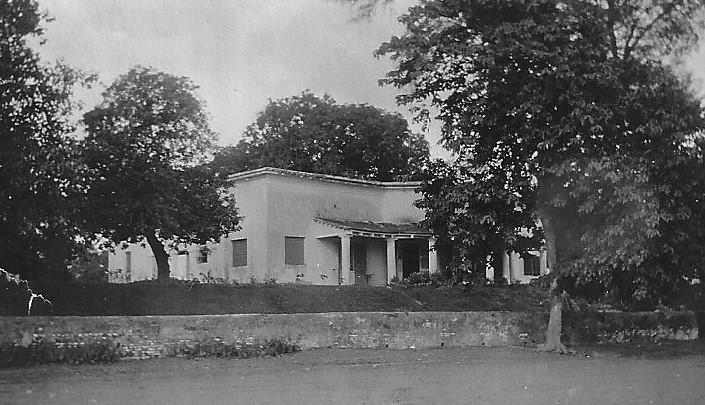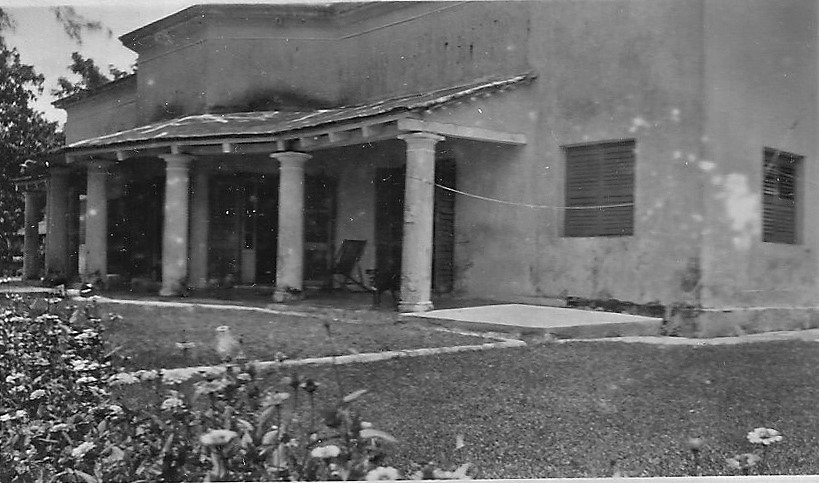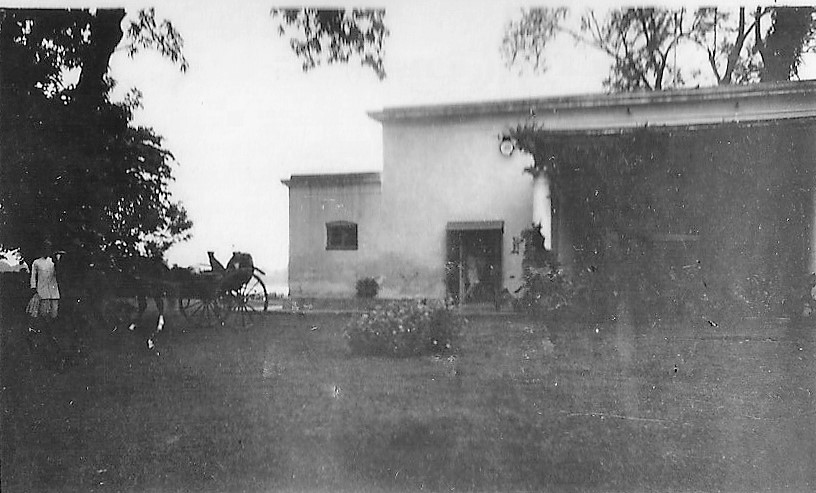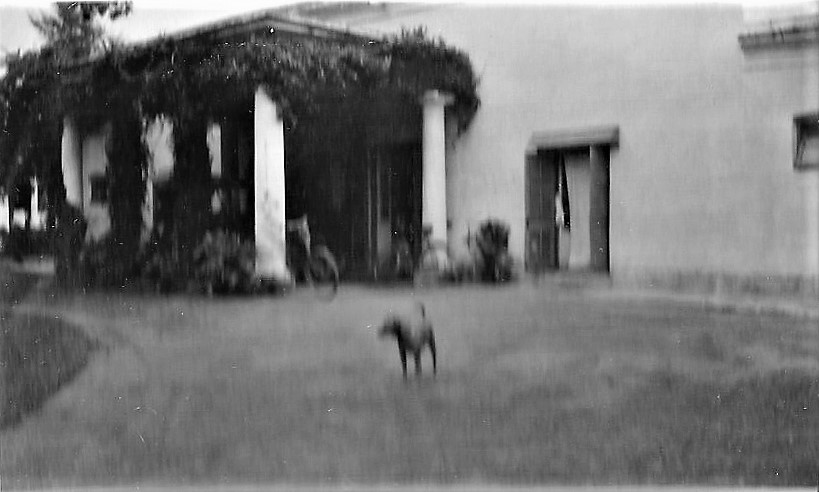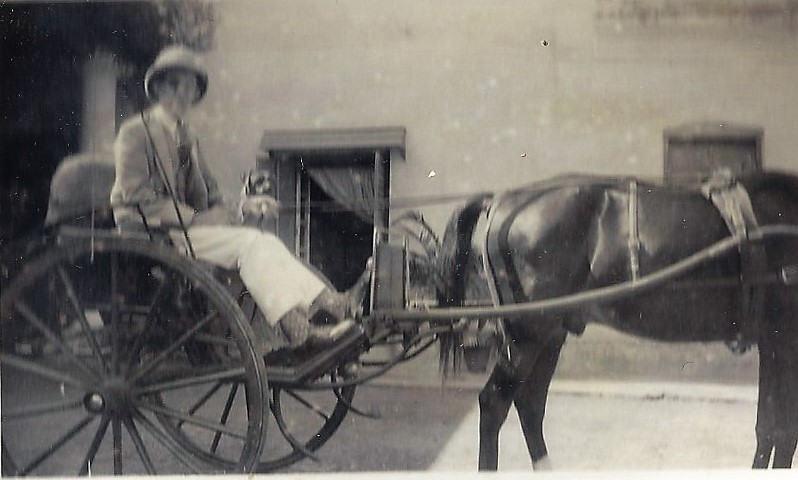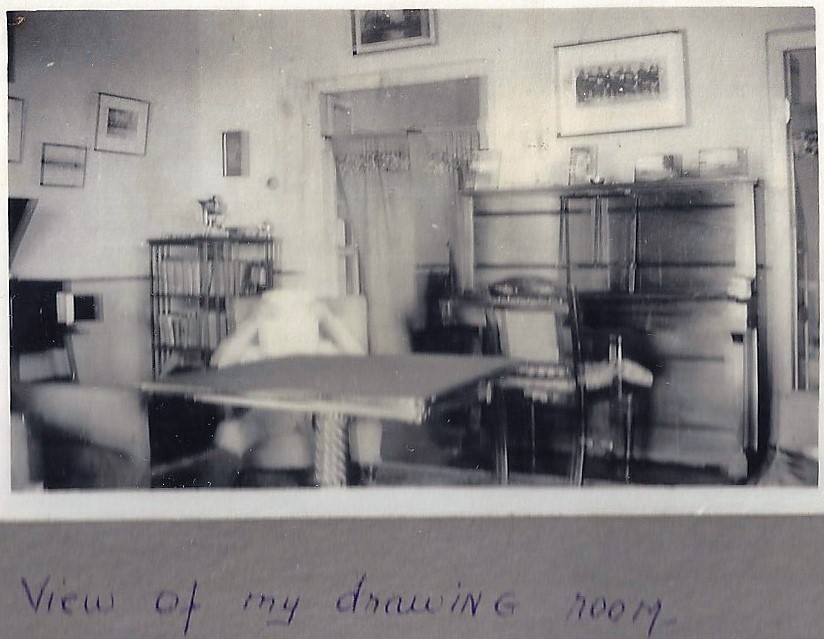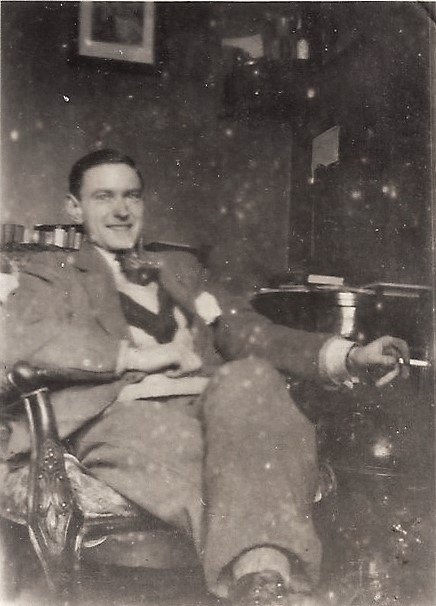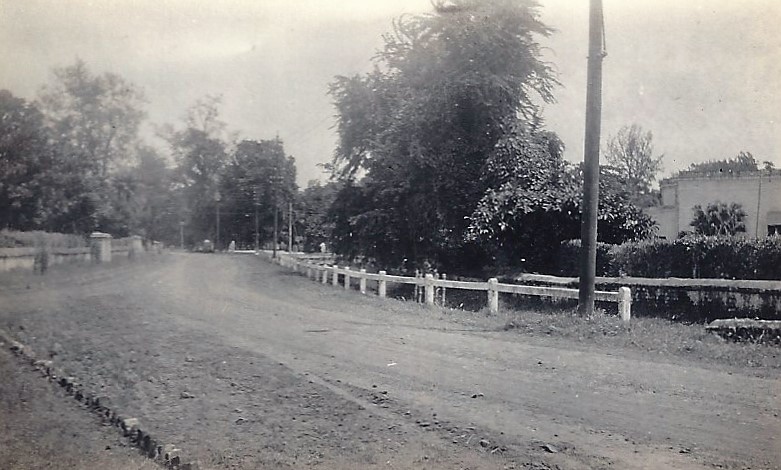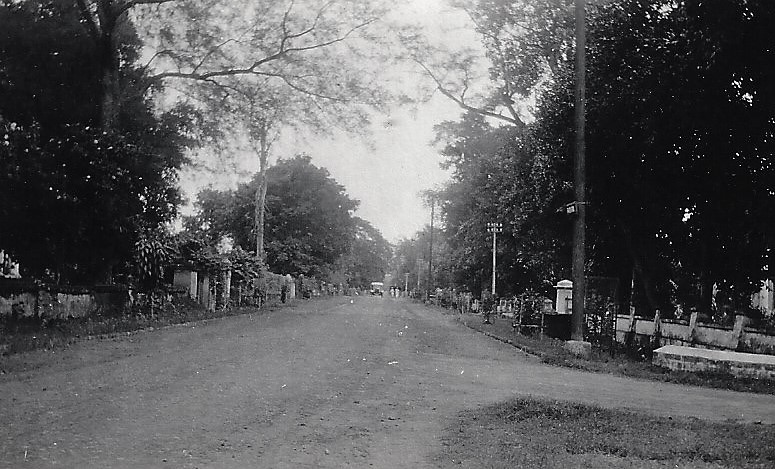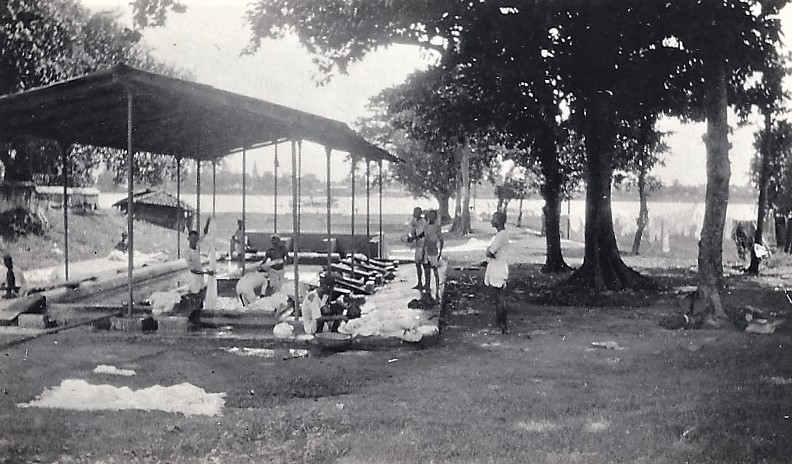My Bungalow in Barrackpore
There are 39 photographs showing John’s bungalow and the area around it.
Many of the photos are very poor but they are included because they were very important to John and seem to reflect his feelings. His nephew is going to try and enter into those feelings, nearly 100 years later.
John could not believe his luck! A spacious, airy bungalow, surrounded by a lovely garden, leading the eye to a majestic expanse of the River Hooghly flowing slowly by.
Front of Bungalow (drive in from road)
Photos of John inside his home
Neither of the two images below, from John’s photograph albums, have anything on the back to tell us, exactly, which house he is in.
All through the years, while his album has been admired, the impression was given – or the assumption made – that when John shows a photograph of “My Bungalow”, it is exclusively his. It was never questioned. Now, with further consideration of John’s life, it is thought far more likely that, as the office junior, he is house-sitting for a more senior member of staff who is on leave. As his nephew, I remember this happening when I arrived at my first Colonial Post in 1959 and later, when I in turn had a fully furnished government house, I was happy to have someone in the house to guard it while I was away on four months leave; to pay the gardener, to keep things going and to water in the dry season.
So this may explain the furnishings in the following photos. Nevertheless, the phrase “My Bungalow” is very dominant in John’s album and gives the feeling that this is truly John’s home.
John is shown sitting in a chair with his face obscured by a newspaper. Is he wearing shorts? It looks like the camera has moved while the photo was being taken, as it is out of focus. Presumably, because of low light conditions inside the house a slow shutter speed was used, with the consequent camera shake.
The photo is intriguing as it shows a well furnished room with a piano on the right and and, on the left, a corner of what may be a gramaphone. There are six pictures on the walls. Above the piano is a group photograph which does not match any that have come down to us. There are four or five photographs on the piano. The centre one looks like a portrait, but again nothing matches what we have.
John looks very handsome. He is holding a cigarette – the only evidence we have that he ever smoked. He is wearing a jacket, which suggests that the weather is cold. Could the photo have been taken when he was in Murree? Its position in the album, among the more general shots, suggests not.
It is probable that he sent photos home as and when they were taken and they were then placed in an album one by one, which is why the album opens with photos of “The Journey Out”, then a month later, his visit to the Tea Gardens, followed by “My Bungalow”. The photo above is towards the end of the album and not near the previous one.
Riverside Road (?), Barrackpore
The three photographs below were probably taken on the same morning walk, around 11:30 on Sunday August 30th 1925. The backs of the photos have the same make of photographic paper, Velox, implying that these photos were printed at the same time.
The first photo records on the back, “View of Barrackpore quite near the bungalow”, so presumably the second photo is not so far away.
The second photo shows another empty road with a car in the distance and two figures nearby. It is dated. Can this road be identified by the gate posts and walls on either side of the road? Are the trees still there? There is no urgency in a hot country to remove shade trees, so perhaps they are. On the left is a flowering tree – is it a frangipani or is the leaf density too thick for that?
The third photo records on the back “Dhoulie [sic] washing ground Barrackpore”. Is this the method by which all the washing was done? A rectangular roof covers a pit, with sloping washing surfaces on either side on which washing can be rubbed. To the right, beyond the tree, washing is drying on lines. Across the Hooghly River on the left is the distinctive spire of a church. Perhaps that spire can help to identify the site of the Dhoulie Washing Ground.
In the other photos posted here, taken from gardens along the river, many features in a sort of outline can be seen on the far bank of the river. In these photos, a factory chimney (a jute mill?) can be seen with a plume of smoke coming from it, to the extreme left of the photo (downstream?). Is it possible to locate the origin of these photos using the buildings on the other side? Likewise, the photos of the river labelled as being from “My Bungalow”, show a large white building almost opposite, with a distinct pattern of smaller buildings. Nearly one hundred years later are they still there?
A film-maker’s view of life in 1940s India
John’s nephew is a great fan of the 1951 film, in glorious Technicolor, called The River by Jean Renoir, from a 1946 story by Rumer Godden. Watch Martin Scorsese on The River here.
It is felt that this film reveals the ambience of privileged living in the time of the Raj, more than 70 years ago. A beautiful house and gardens beside a river and the story of a young family living there.
It is hoped that Indians do not feel the film is too patronising or untruthful in this depiction of gracious living (i.e. what John experienced). Then he had all this for his own enjoyment – alone!
Times have changed, of course, and while Barrackpore is still very much dominated by the military, the website below gives a flavour of the area nowadays: Barrackpore Trip Guide – A walk down the forgotten history of the Oldest Cantonment


